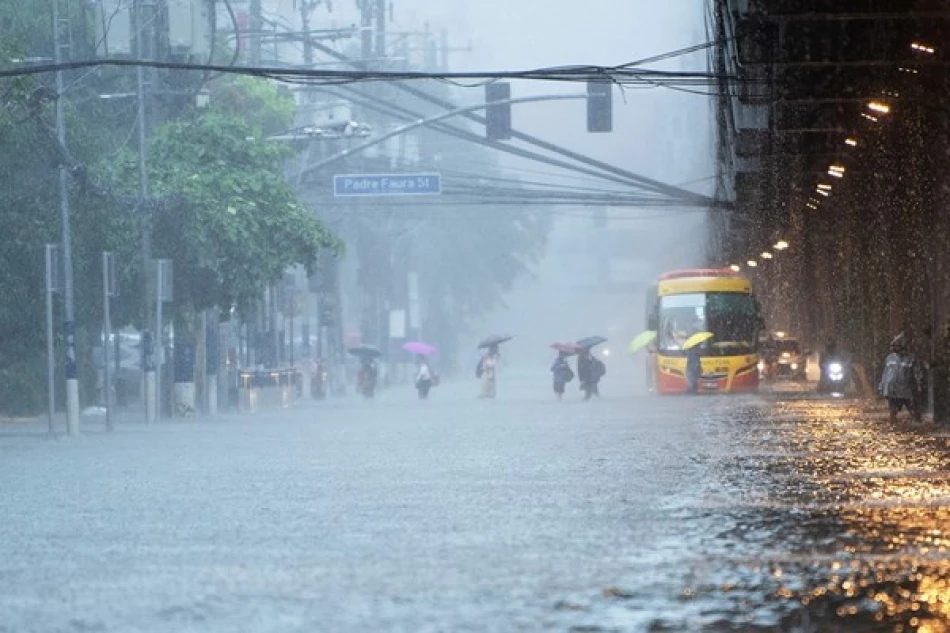
Heavy Floods Displace Over 70,000 Filipinos From Homes
Philippines Faces Climate Reality Check as Typhoon Yinxing Forces 70,000 from Homes Around Manila
The Philippines is confronting another devastating reminder of its vulnerability to increasingly severe weather patterns, as Typhoon Yinxing has displaced 70,000 residents around Manila and claimed at least eight lives. The disaster underscores how climate change is transforming the archipelago nation into a testing ground for extreme weather adaptation, with storms now forming closer to coastlines and intensifying faster than ever before.
Immediate Crisis Overwhelms Metro Manila
Heavy rainfall throughout Monday night caused the Marikina River to overflow, triggering widespread flooding that forced authorities to close schools and government offices across the capital region on Tuesday. The human toll has been severe, with over 23,000 people living along riverbanks seeking emergency shelter in schools, municipal halls, and covered courtyards overnight.
An additional 44,000 residents were evacuated from Quezon City and Caloocan in Greater Manila, highlighting the sprawling nature of the crisis. "These people usually come from low-lying areas along the streams" that feed into the main river system, explained Wilmer Tan from Marikina City's rescue service.
Recovery Hampered by Ongoing Threats
While floodwaters began receding Tuesday afternoon, thousands of displaced families remain unable to return home. The Philippine national weather service has warned that rainfall will continue through the end of the week, potentially complicating recovery efforts and raising the risk of additional flooding.
A Pattern of Escalating Climate Impacts
Typhoon Yinxing represents more than an isolated weather event—it exemplifies a troubling trend across the Asia-Pacific region. The storm had already killed at least six people and left six others missing in central and southern Philippines before reaching the capital area, bringing the total death toll to at least eight.
Climate experts point to alarming changes in storm behavior that make the Philippines increasingly vulnerable. Typhoons are now forming closer to coastlines, intensifying more rapidly, and maintaining their strength longer over land. This evolution in storm patterns means less preparation time for communities and more sustained damage when systems make landfall.
Regional Implications for Disaster Preparedness
The Philippines' experience serves as a crucial case study for other Southeast Asian nations facing similar climate pressures. Unlike wealthier neighbors such as Singapore, which can invest heavily in flood management infrastructure, or island nations like the Maldives that focus primarily on sea-level rise, the Philippines must contend with multiple climate threats across thousands of inhabited islands.
The country's regular exposure to 15-20 typhoons annually has historically provided a form of disaster preparedness advantage. However, the changing intensity and behavior of these storms is outpacing traditional adaptation measures, forcing a fundamental rethink of emergency response strategies.
Economic and Social Costs Mount
The displacement of 70,000 people around Manila alone demonstrates the massive economic disruption these events create. School and government office closures ripple through the economy, while emergency shelter operations strain municipal resources already stretched by frequent disaster response.
For international observers, the Philippines' struggle illustrates the front-line reality of climate adaptation costs. The nation's experience suggests that even countries with extensive disaster preparedness experience face mounting challenges as weather patterns shift beyond historical norms.
As recovery efforts continue and meteorologists track additional weather systems, Typhoon Yinxing stands as another data point in the Philippines' unwilling role as a laboratory for climate resilience in the 21st century.
 Layla Al Mansoori
Layla Al Mansoori







